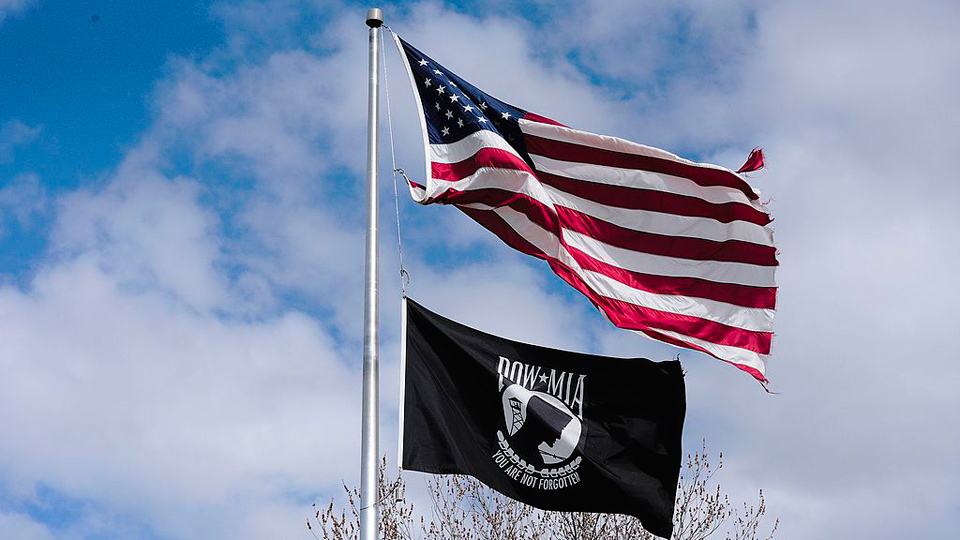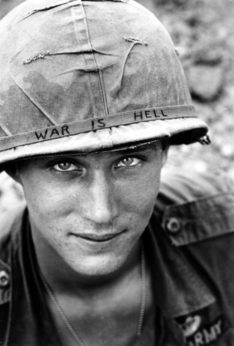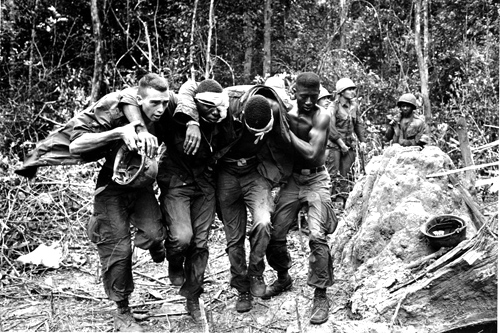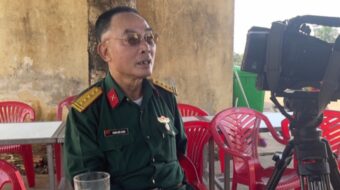
Ever wonder about those black and white POW/MIA flags so frequently seen flying just below the Stars and Stripes? National POW/MIA Recognition Day is observed on the third Friday in September, this year Sept. 15. It is supposed to honor those who were prisoners of war and those who might still be missing in action.
The day was established by Congress, as part of the 1998 Defense Authorization Act. A separate National Former Prisoner of War Recognition Day is recognized in April yearly by presidential proclamation. On April 7, 2017, President Donald Trump issued such a proclamation.
The flag, created by Newton F. Heisley in 1972 and first recognized by Public Law 101-355 in 1990, signed by GOP President George H.W. Bush, originated while the Vietnam War was still going on, and specifically references Southeast Asia. Though it has nominally become a symbol for POW/MIAs from all U.S. wars, such attention to this issue never surfaced until the 1970s.
The POW/MIA flag is tied to the National League of POW/MIA Families, which began in June 1969 as the National League of Families of American Prisoners in Southeast Asia. It was started by wives of U.S. pilots shot down on bombing runs over North Vietnam. It first flew over the White House, then occupied by Ronald Reagan, in September 1982. The flag is also installed in the U.S. Capitol rotunda.
The flag originated while the Vietnam War was still going on, and specifically references Southeast Asia. Though it has nominally become a symbol for POW/MIAs from all U.S. wars, such attention to this issue never surfaced until the 1970s.
The design of the flag implies that personnel listed as MIA may in fact be held captive. Where would such a belief come from?

Widespread speculation has crystallized into a hypothesis that a significant number of these men were captured as POWs in Vietnam and Laos, and kept as live prisoners after the conclusion of hostilities (for the U.S.) in 1973. A vocal group of POW/MIA activists maintains that there has been a concerted conspiracy by the Vietnamese government and every American government since then to hide the existence of these prisoners. The U.S. government has steadfastly denied that prisoners were left behind or that any effort has been made to cover up their existence.
Popular culture has reflected the “live prisoners” theory in Hollywood films, beginning with Chuck Norris’s 1978 Good Guys Wear Black. Uncommon Valor, starring Gene Hackman, followed suit in 1983. Norris returned in 1984 with Missing in Action. Most notably, in the 1985 film Rambo: First Blood Part II, the hypothesis became broadly accepted as factual. Rambo was followed by Norris’s 1985 prequel Missing in Action 2: The Beginning, as well as P.O.W. The Escape (1986) and Dog Tags (1990). One song that became a hit was Merle Haggard’s 1972 number one country single “I Wonder If They Ever Think of Me.”
The POW/MIA issue was also explored on television. The long-running series Magnum, P.I. included multiple episodes in the mid-late-1980s themed around the possibility of American POWs remaining in Vietnam. The 1997 The X-Files episode “Unrequited” also dealt with this notion. POW/MIA concerns were part of a key storyline in the series JAG in the late 1990s.
In the words of one analysis, “The notion that the United States may have left men behind was hard to fathom, and Americans chose to partly solve this complex problem through fictional characters.”
A July 1991 Newsweek cover photograph purported to show three American POWs still being held against their will, which increased general public interest in the issue. However, the photograph turned out to be a hoax. Nevertheless, polls showed that a majority of Americans believed live POWs were indeed still being held captive; a July 1991 Wall Street Journal poll showed 70 percent of Americans believing this, and that three-fourths of them believed the U.S. government was not doing what needed to be done to gain their release.
The Defense Prisoner of War/Missing Personnel Office (DPMO) provides centralized management of POW/MIA affairs within the U.S. Department of Defense. As of March 29, 2017, 1611 Americans from the Southeast Asian wars remained unaccounted for: 1023 were classified for further pursuit, 497 as no further pursuit, and 91 as deferred.
Following the Paris Peace Accords of 1973, 591 American POWs were returned during Operation Homecoming. At that time, the Nixon government listed about 2500 Americans as POWs or MIA, which was surely an exaggeration, only 1200 of them reported killed in action and body not recovered. Many of these were airmen who were shot down on bombing runs over North Vietnam or Laos, such as Sen. John McCain. His capture and subsequent imprisonment occurred on October 26, 1967. He was flying his 23rd bombing mission over Hanoi in North Vietnam when his A-4E Skyhawk was shot down by a missile.
If these men did not survive, then the U.S. felt committed to recover their remains, pressed by their families in the interest of certainty and closure. Progress in doing so was slow until the mid-1980s, when relations between the U.S. and Vietnam began to improve and more cooperative efforts were undertaken. Normalization of U.S. relations with Vietnam in the mid-1990s under President Clinton was a culmination of this process.
Several congressional investigations have looked into the issue thoroughly, culminating with the U.S. Senate Select Committee on POW/MIA Affairs of 1991–1993 led by Senators John Kerry, Bob Smith, and John McCain. Their official, bipartisan finding was that there is “no compelling evidence that proves that any American remains alive in captivity in Southeast Asia.”
The fate of those missing in action has always been one of the most troubling and unsettling consequences of any war. In this case, the issue is complicated by the political slant of different interest groups. People on the left, it is reasonable to say, are not opposed to recovering remains of American service members, but would ask why they were sent halfway across the globe in the first place to fight a neocolonial war against a poor peasant people who had never done anything against the United States. Generations later, U.S. corporations now have thriving businesses in Southeast Asian countries, and if that was the objective it could have been achieved by far more peaceful means. More than 58,000 Americans died in the Vietnam War.
Humanitarians might also ask, since the U.S. created such devastation in Southeast Asia—which still has repercussions to this day in exploding bombs and land mines, the effects of napalm and other poisonous chemicals and resulting birth defects—why does the U.S. not do more to recover remains of the three million or more Vietnamese who died in the war, and to pay reparations for rehabilitation and health care?
The POW/MIA issue, which Americans are reminded of every day when they see the ubiquitous flag, will not go away very soon. In certain veteran circles, and more particularly in right-wing fantasy, the flag is a constant provocation against what they imagine to be our duplicitous government ridden with liberal communist sympathizers. Such thinking harkens back to the familiar trope of fascist movements: “Our country was betrayed from within! Our noble military was stabbed in the back! We could have won that war if not for the lily-livered nervous Nellies in Congress!” Grandstanding politicians built their careers on this basis.

Our country has suffered from the “Vietnam Syndrome” ever since—not that we’re hesitant to go to war, for we have, but from hypernationalist forces who simply cannot accept that the U.S. is no longer, nor has the right to be, the world’s top cop. The Vietnam War had an especially racist character and we have never had a thorough national debate about it, although public opinion tends toward thinking it an ill-advised, poorly conducted embarrassment.
There are no more POWs; and at this point there is little effective relief for the MIA families, other than the occasional unpredictable discovery of some remains in the jungles of Vietnam.
For others, the POW/MIA issue is a wound constantly picked at and never allowed to heal. There are social and political reasons why it goes on festering and coloring the conversation, and an economic benefit as well in the multiplicity of POW/MIA merchandise made available for sale. The POW/MIA flag is sadly not just a reverent sign of appreciative remembrance such as we observe on Memorial Day, but a constant vexation to our lesser angels.
Source: Wikipedia and combined sources












Comments